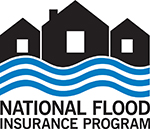We use cookies to make your experience better. To comply with the new e-Privacy directive, we need to ask for your consent to set the cookies. Learn more.
SRH 2D
2D Flow Modeling with SMS

Application:Riverine Modeling
Method:2D Finite Volume
Developer:Bureau of Reclamation
 SRH-2D Is a FEMA Approved Model
SRH-2D Is a FEMA Approved Model
Why SRH with SMS?
SMS provides a custom interface to the SRH model offering a simple way to set model parameters and a graphical user interface to run the model and visualize the results. Gather background data from a variety of sources from GIS to CAD and access online data from numerous databases of maps, images, and elevation data. SMS allows you to interact with models in true 3D taking advantage of optimized OpenGL graphics and to create photo-realistic renderings and animations for PowerPoint, print, and web presentations.
The custom SRH Interface in SMS 12.1 and later supports running the model in multiple simulations and also supports hydraulic structures such as weirs, culverts, pressure zones, gates and obstructions.
Try SMS Free for 14 Days >Purchase SMS with SRH >
SRH Description:
SRH-2D is a hydraulic model developed by the U.S. Bureau of Reclamation that incorporates very robust and stable numerical schemes with a seamless wetting-drying algorithm. The model uses a flexible mesh that may contain arbitrarily shaped cells, both quadrilateral and triangular elements, which promotes solution accuracy while minimizing computing demand. SRH-2D modeling applications include flows with in-stream structures, through bends, with perched rivers, with side channel and agricultural returns, and with braided channel systems. SRH-2D is well suited for modeling local flow velocities, eddy patterns, flow recirculation, lateral velocity variation, and flow over banks and levees.
Features and capabilities of SRH-2D include:
- 2D depth-averaged dynamic wave equations (the standard St. Venant equations) are solved with the finite-volume numerical method.
- Steady state and unsteady flows may be simulated.
- An implicit scheme used for time integration to achieve solution robustness and efficiency
- An unstructured arbitrarily-shaped mesh is used which includes the structured quadrilateral mesh, the purely triangular mesh, or a combination of the two.
- All flow regimes, i.e., subcritical, transcritical, and supercritical flows, may be simulated simultaneously without the need for special treatments.
- Model incorporates a robust and seamless wetting-drying algorithm.
- Output solutions include water surface elevation, water depth, depth averaged velocity, Froude number, and bed shear stress.
